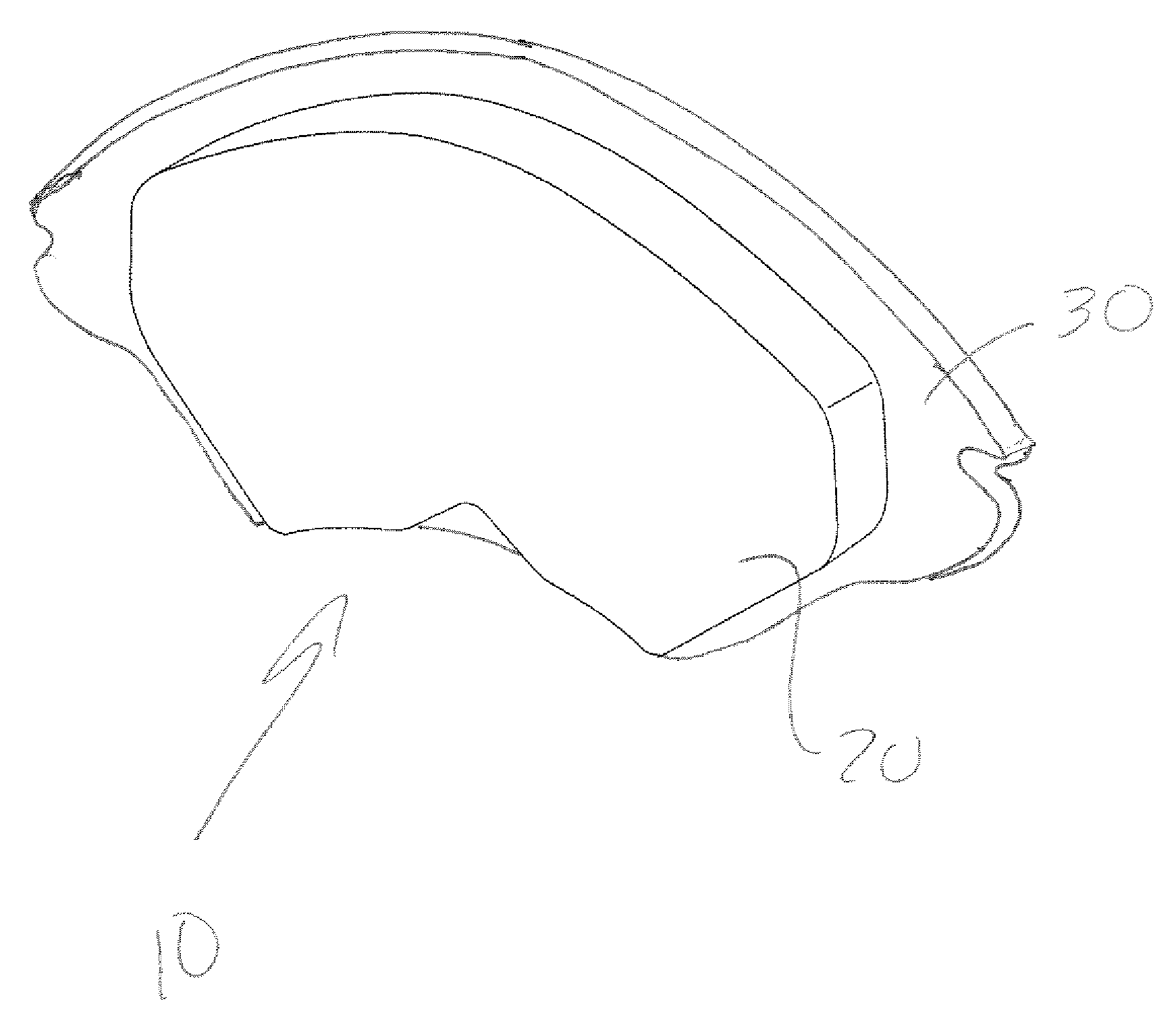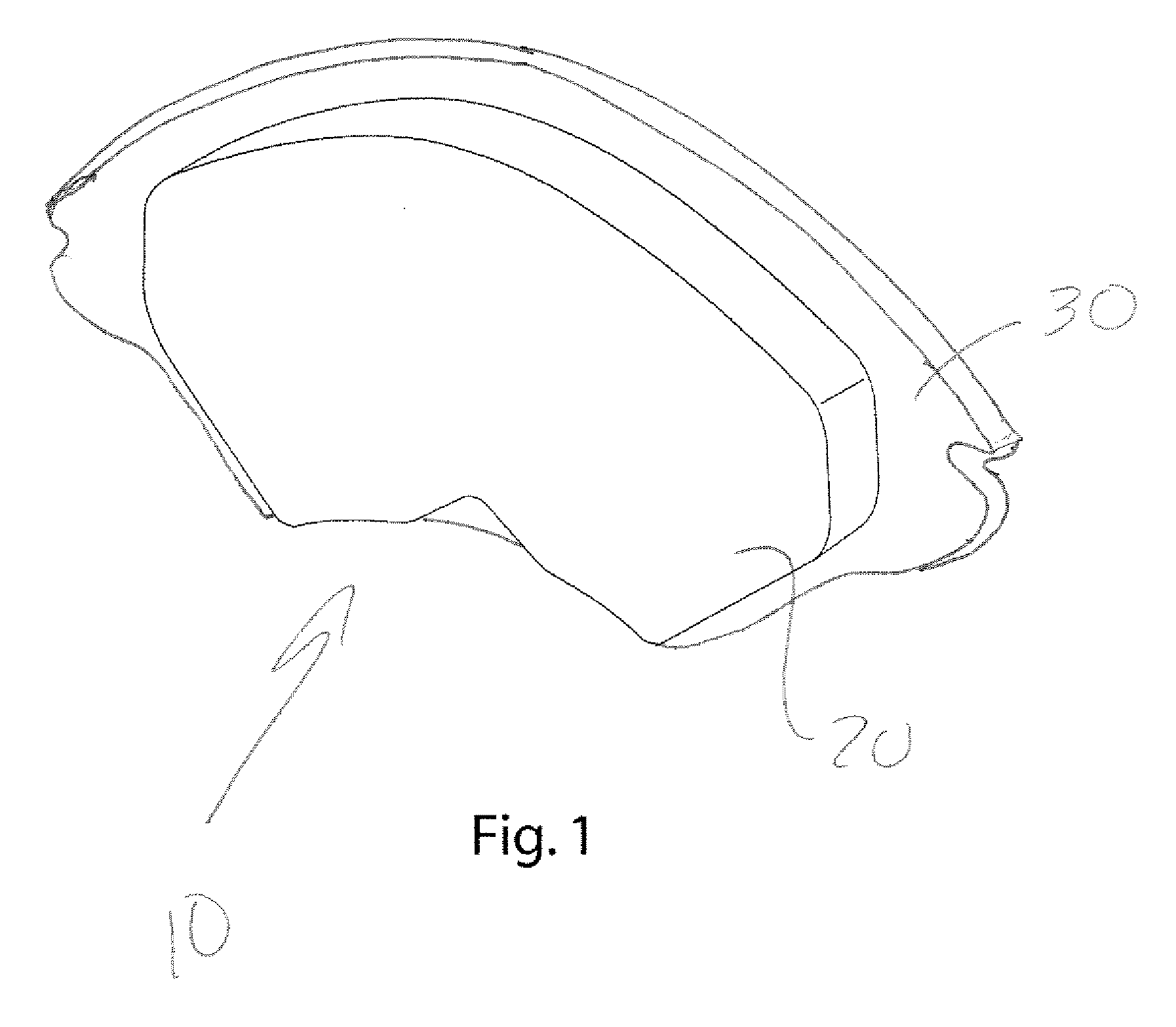Friction material for brakes
a friction material and brake technology, applied in the direction of friction lining, mechanical equipment, etc., can solve the problems of increasing the amount of wear on the rotor against which the friction material engages, steel fibers also generate dust that can quickly and permanently stain the surface finish of the rim of the vehicle, etc., to achieve the same level of friction, noise and other performance characteristics, and the effect of reducing the number of times
- Summary
- Abstract
- Description
- Claims
- Application Information
AI Technical Summary
Benefits of technology
Problems solved by technology
Method used
Image
Examples
example 1
[0020]
Binder21Fiber7Lubricant4Total Abrasives15Fillers53Copper and Copper alloys0Titanates0Total100
[0021]The ingredients of Example 1 were blended in a standard tumble mixer for approximately 7 minutes and then performs were made and hot press cured to a metal booking and then post-cured as described above. The friction material of Example 1 was found to have good all-around manufacturing and performance characteristics comparable to friction formulations containing copper or copper alloys and titanates included in them. The remaining examples were made by the same process as Example 1.
example 2
[0022]
Binder15Fiber7Lubricant4Total Abrasives15Fillers59Copper and Copper alloys0Titanates0Total100
[0023]The final friction composition of Example 2 had generally good performance characteristics although the preforming and bonding to the back plate at 300° C. characteristics were not as good as the friction material in mixture Example 1. It is believed that the binder at 15% by volume or lower detracts from the bonding characteristics of the friction material and in particular, bonding the friction material to the back plate at 300° C.
example 3
[0024]
Binder24Fiber7Lubricant4Total Abrasives15Fillers50Copper and Copper alloys0Titanates0Total100
[0025]Some variations in Example 3 as compared to Example 1 include extremely low void volumes in the pad. Generally a very desirable characteristics for brake pads is that the noise levels be low since the noise from braking is a common cause of customer complaints related to braking systems. Low level voids also correlate to very stiff pads with very low compressibility values. This material showed the lowest compressibility properties of all the examples tested, demonstrating that the high resin binder level affects this property. As opposed to Example 2, the bonding to the back plate both at room temperature and at 300° C. was excellent, and very low press pressures were required to get acceptable pad integrities, but due to the low compressibility and in particular the low voids potentially causing noise, a binder level above 24% by volume of the friction material would be undesir...
PUM
 Login to View More
Login to View More Abstract
Description
Claims
Application Information
 Login to View More
Login to View More - R&D
- Intellectual Property
- Life Sciences
- Materials
- Tech Scout
- Unparalleled Data Quality
- Higher Quality Content
- 60% Fewer Hallucinations
Browse by: Latest US Patents, China's latest patents, Technical Efficacy Thesaurus, Application Domain, Technology Topic, Popular Technical Reports.
© 2025 PatSnap. All rights reserved.Legal|Privacy policy|Modern Slavery Act Transparency Statement|Sitemap|About US| Contact US: help@patsnap.com


